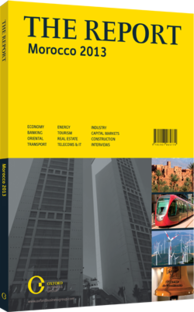Raising roofs: A multi-pronged approach should boost social housing stock in the medium term
As in many emerging economies, public spending on infrastructure and social programmes has stimulated Morocco’s construction industry, despite the global economic downturn that has greatly affected the sector in both the US and Europe. Social housing programmes have been a driving force in the industry a trend that is set to continue for the foreseeable future. The Ministry of Housing and Urban Planning (MHUP) estimated that Morocco’s housing deficit reached 840,000 units by the end of 2011. Demand for affordable housing continues to grow, even with a recent ambitious building programme in 2010.
LOWERING A DEFICIT: The state has committed to reducing this shortfall as quickly as possible, particularly in the context of the Arab Spring and continued public protests in Morocco regarding consumer prices and unemployment. The ministry has set the goal of constructing 150,000 social housing units per year between 2012 and 2020. Figures from the MHUP indicate that a total of 249,000 homes were constructed in 2011, of which 110,000 were social housing units. This represents an 11.3% increase from the 98,800 social housing units constructed in 2010.
The government has adopted a multi-pronged approach to reduce the social housing deficit and absorb sub-standard housing and urban slums. One component is the state-led plan, Cities Without Slums (Villes Sans Bidonvilles, VSB), which aims to eliminate urban slums in 85 cities and relocate 327,000 households to new urban areas. The government is working with private firms to develop “new cities” nationwide, four of which are under construction, that are meant to increase the stock of social and mid-range housing while reducing urban congestion.
ADDING A PUSH: The state is working to stimulate building projects across the board through the introduction of a number of fiscal incentives unique to social housing projects. Specifically, incentives such as exemption from corporate tax, value-added tax, land registration fees and the national cement tax are intended to increase the yield on social housing projects for developers and attract private sector investment. These measures were set to expire at the end of 2012, but have been renewed until 20202 under the 2013 Finance Act, given the continued social housing shortage.
Social housing projects have been responsible for much of the recent growth in the consumption of cement and other building materials, buoying the construction sector during a difficult economic period. The pace of building, an indicator developed by the MHUP based primarily on the volume of cement sales, picked up noticeably from 2010 to 2011. Fez saw a 32% year-on-year increase in housing construction, followed by 13% in Casablanca and 9% in Rabat-Salé-Temara. Ministry officials attribute the bulk of this growth to social housing incentives, as well as state-led infrastructure projects. However, the cities of Tangier, Tétouan and Marrakech continue to be affected by the recession and have shown slower construction dynamics in the last two years; building in Meknès decreased by 2% in 2011.
OTHER BUILDING: Part of the construction boom is due to an uptick in informal building. Reports from the MHUP and the Association of Professional Cement Manufacturers both showed that efforts to monitor informal and irregular home building were relaxed before the 2011 parliamentary elections and in response to the Arab Spring. This was evident in rural areas as well as in major cities such as Agadir, Tangier-Tétouan, Casablanca and Marrakech, as related by the national press. While this continues to stimulate the market for building materials, it also presents a challenge for the MHUP to ensure that all urban construction meets national standards for quality, safety and durability.
Still, the state-led building push should help to boost construction standards in the social housing segment.
Continuing efforts on the VSB programme should considerably reduce sub-standard housing and a government initiative to put a national construction code in place by 2014 would introduce legal obligations for the quality of both building materials and practices.
You have reached the limit of premium articles you can view for free.
Choose from the options below to purchase print or digital editions of our Reports. You can also purchase a website subscription giving you unlimited access to all of our Reports online for 12 months.
If you have already purchased this Report or have a website subscription, please login to continue.

